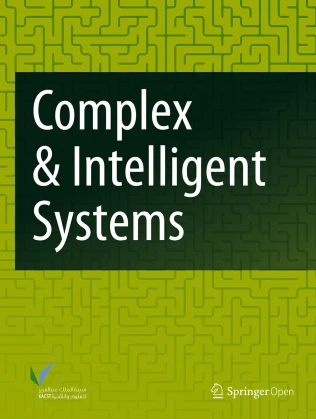通过线性规划的数据约简和误分类分析提高支持向量机性能。
IF 4.6
2区 计算机科学
Q1 COMPUTER SCIENCE, ARTIFICIAL INTELLIGENCE
引用次数: 0
摘要
在支持向量机(SVM)背后的对偶优化问题中,每个数据点对应一个决策变量。因此,去除数据点相当于降低了对偶问题的维数,从而实现了更高效的优化过程。我们引入线性规划模型来有效地确定两组点是否线性可分,计算错分类率,并降低支持向量机过程背后优化问题的维数。对于线性可分的情况,可以使用简单的凸性来进行数据约简。误分类率是区分两组数据复杂性的关键指标,为分类性能提供了有价值的见解。我们的方法将支持向量机优化与线性规划技术相结合,提供了一个全面的分类和复杂性分析框架。本文章由计算机程序翻译,如有差异,请以英文原文为准。
Improving SVM performance through data reduction and misclassification analysis with linear programming.
In the dual optimization problem behind Support Vector Machine (SVM), each data point corresponds to a decision variable. Therefore, removing data points is equivalent to reducing the dimensionality of the dual problem, leading to a more efficient optimization process. We introduce linear programming models to determine whether two sets of points are linearly separable efficiently, compute the misclassification rate, and reduce the dimension of the optimization problems behind the SVM procedure. Data reduction can be conducted using a simple convexity property for the linearly separable case. The misclassification rate is a key indicator of the complexity of separating the two sets, providing valuable insights into the classification performance. Our approach combines SVM optimization with linear programming techniques to offer a comprehensive classification and complexity analysis framework.
求助全文
通过发布文献求助,成功后即可免费获取论文全文。
去求助
来源期刊

Complex & Intelligent Systems
COMPUTER SCIENCE, ARTIFICIAL INTELLIGENCE-
CiteScore
9.60
自引率
10.30%
发文量
297
期刊介绍:
Complex & Intelligent Systems aims to provide a forum for presenting and discussing novel approaches, tools and techniques meant for attaining a cross-fertilization between the broad fields of complex systems, computational simulation, and intelligent analytics and visualization. The transdisciplinary research that the journal focuses on will expand the boundaries of our understanding by investigating the principles and processes that underlie many of the most profound problems facing society today.
 求助内容:
求助内容: 应助结果提醒方式:
应助结果提醒方式:


